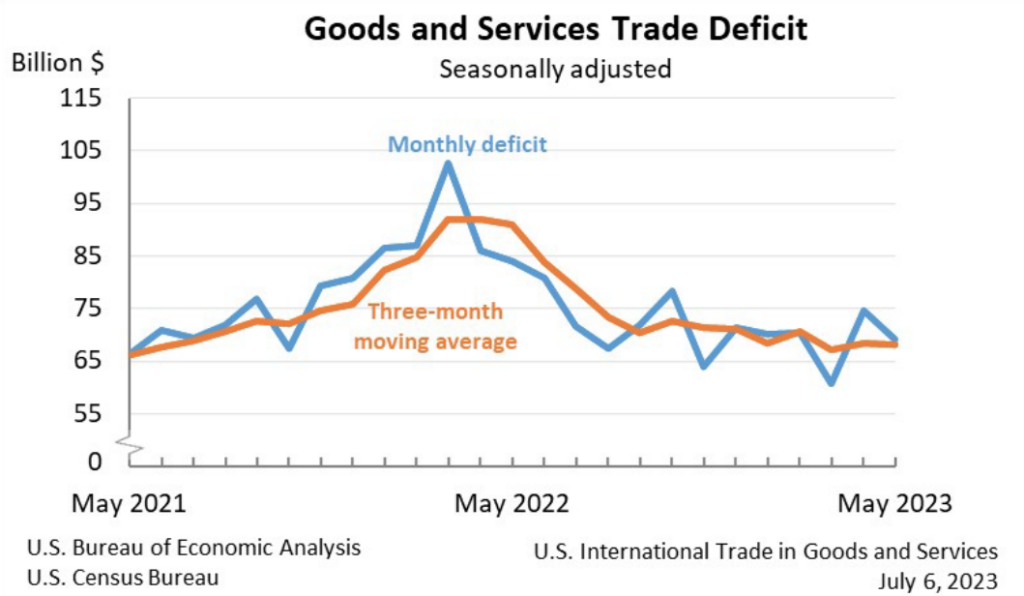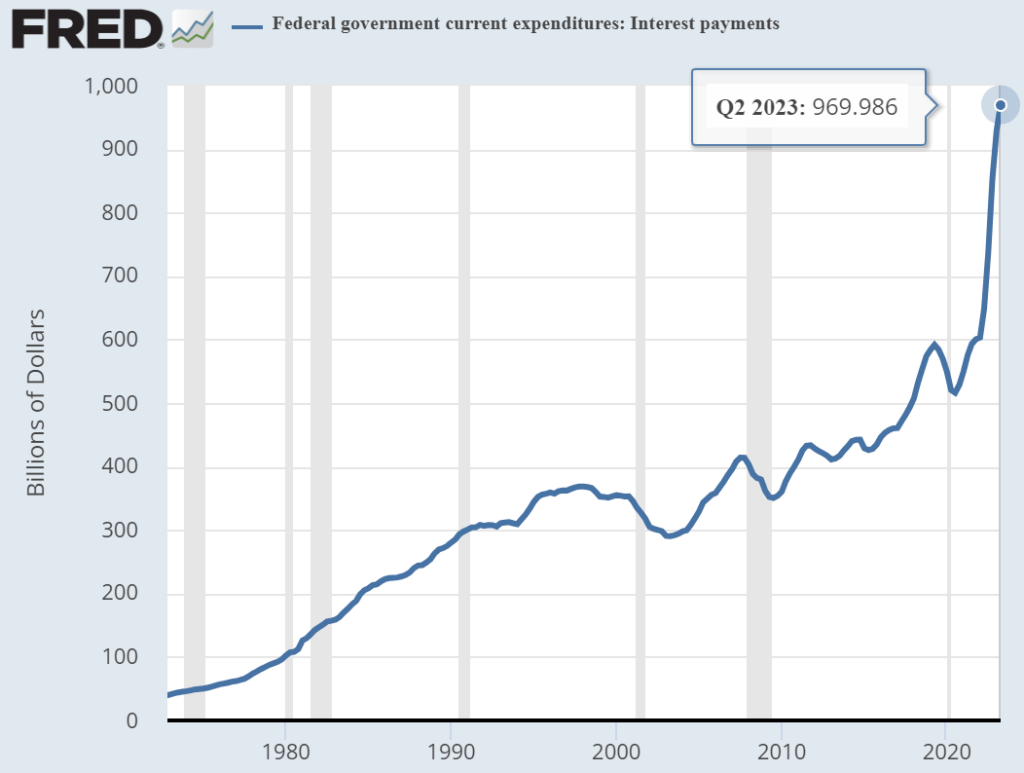The macroeconomic narrative shifts from recession to a soft landing.
The Bureau of Economic Analysis (BEA) released the quarterly gross domestic product (GDP) data on Thursday. Although subject to further revision in August, the Q2 GDP data shows a 2.4% annual growth, an uptick from Q1’s 2.0% economic growth.
The fact that GDP significantly beat the estimated 1.8% lends credence to the emerging ‘soft landing’ narrative. For over a year, economists had expected recession (hard landing) to follow the most aggressive interest rate hiking cycle in over 40 years.
Contradictory Macro Signals
As the Federal Reserve suppressed asset valuation by making borrowing expensive, there has been no shortage of recessionary signals, from sharp tech layoffs to heavy banking failures.
Surprisingly positive GDP growth follows an equally upbeat inflation downturn in June, beating the estimated 3.1% at 3.0% Consumer Price Index (CPI). Likewise, fresh data shows core Personal Consumption Expenditure (PCE) dropping to 4.1%, the lowest in two years.
Based on these macro tailwinds, on Wednesday, Fed Chair Jerome Powell stated that his team of experts is “no longer forecasting a recession.” But is the GDP growth indicative of an actual soft landing?
The Origin of the Positive GDP Growth
Although not strictly determined by two consecutive quarters of negative GDP growth, it plays a big part in whether the National Bureau of Economic Research (NBER) will declare recession as such.
Other factors include real consumer spending, employment rate, and real personal income. The latest BEA data show mixed signals. As subtracted from taxes and other mandatory payments and adjusted for inflation, real disposable personal income increased by 2.5%, compared to an 8.5% increase in the previous quarter.
On the other hand, the personal savings rate, as a percentage of disposable income, increased slightly at 4.4% in Q2 compared to 4.3% in Q1. The big metric is consumer spending, accounting for over two-thirds of the US economy. The Commerce Department reported a significant uptick in consumer spending in June, at 0.4% adjusted for inflation, compared to 0.2% in May.
Aside from consumer spending, GDP increase comes from nonresidential fixed investments, private inventory investments, and an increase in federal government spending.
Economic Activity Still Running on Debt Fumes
As a countervailing ‘soft landing’ narrative, BEA reported imports and exports decreasing as of July 6th. Year-over-year, from May 2022, average imports decreased by $22.6 billion, while average exports increased by only $0.3 billion, signaling a weaker economy.

Image courtesy of BEA.
In the meantime, both consumers and the federal government have accrued record-breaking debt levels. As of Q1 2023, US households hold $17.05 trillion in debt, split between mortgages, credit cards, and auto loans.
On the positive side, the structure of the mortgage debt is one of the critical reasons for the recession being stalled. That’s because most family mortgages have been locked under 3% interest, accounting for $13.5 trillion, per the Bloomberg MBS (mortgage-backed securities) index.
Therefore, this enormous debt pool was unaffected by the Fed’s aggressive hiking schedule. In the meantime, interest payments are breaking all prior ceilings because the interest rate is at the highest level in 22 years.

Image courtesy of the Federal Reserve.
Instead of servicing productivity, the government is about to cross the $1 trillion threshold in debt servicing.
Rapid debt escalation, resulting in a budget deficit deepening to $1.4 trillion in the first nine months of FY 2023, means the government has tighter maneuvering space. It then becomes a race between tax collection to service debt instead of improving economic growth.

Not only does the budget deficit keep increasing, but revenues are 11% lower compared to FY 2022. Image courtesy of Congressional Budget Office (CBO) report on July 11th.
Labor Market Resilience Still in Play
In addition to the aforementioned housing market resilience, the labor market is still tight. Across multiple FOMC meetings, Jerome Powell noted that labor market conditions would have to be loosened (lost jobs) to bring inflation to the 2% target.
While the Fed has a dual mandate to maintain price stability and low unemployment, the former is now prioritized.
“Without price stability, the economy doesn’t work for anyone. In particular, without price stability, we will not achieve a sustained period of strong labor market conditions that benefit all.”
Fed Chair Jerome Powell at Wednesday’s press conference
And if unemployment goes up, that is, by definition, a recession. At least, if the unemployment rate goes to 4.5% over the next year, according to Joseph Davis, Vanguard Group’s chief economist:
“Well, that’s a hundred basis-point rise. So by definition, that is a recession. Now, anyone who thinks that that’s a soft landing is spitting in the face of 150 years of history.”
Talk of Resilient Economy on Fragile Grounds
Lastly, it must be noted that the Fed has a poor track record regarding forecasting. At this week’s press conference, Fed Chair Powell reiterated the “overall resilience of the economy.”
The problem is that type of phrasing has been floated before, just before the Great Recession of 2008.

Image courtesy of Reuters.
In the end, the cyclic nature of a debt-based economy points to a deleveraging process. Whether that is soft or hard is yet to be seen.
Neither the author, Tim Fries, nor this website, The Tokenist, provide financial advice. Please consult our website policy prior to making financial decisions.
***
This article was originally published on The Tokenist. Check out The Tokenist’s free newsletter, Five Minute Finance, for weekly analysis of the biggest trends in finance and technology.
